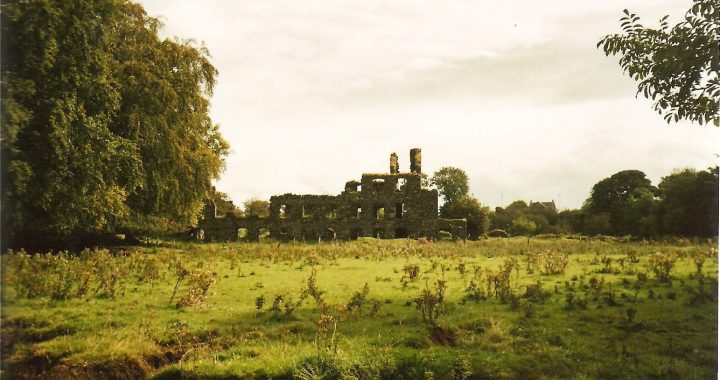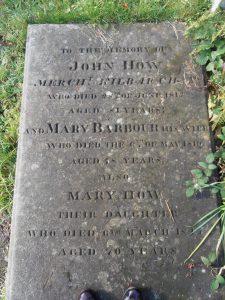John How’s forebears had lived at Dampton in Kilbarchan Parish since the middle of the seventeenth century. They were renowned as surgeons, with eight family members in succession having practised medicine. John How, however, bucked the trend and set himself up as a linen merchant in the village. He married Mary Barbour, the daughter of Baillie John Barbour, on the 14th February, 1767. They had five sons James, John, William, Thomas and Humphrey and two daughters, Janet and Mary.
John How was an influential man in the parish and beyond. He owned numerous pieces of land in and around Kilbarchan village and, as a heritor, he had the right to vote in Renfrewshire parliamentary elections and was a founding member of Kilbarchan General Society in 1765. He was also a founding member of Glasgow Chamber of Commerce in 1783 and is said to have been ‘much esteemed all over the county’.
The minutes of the Chamber of Commerce refer to a letter he sent to them in 1785 concerning the manufacture of silk and linen in Renfrewshire. This indicates that his weavers in Kilbarchan were working in both silk and linen in the 1780s. Like the Speirs, and Barbour families, John How exported his finished textiles to Dublin where he had established premises in the late 1770s.
In the early 1780s John How’s business had been in financial difficulties. In 1781 he sold part of his lands in Kilbarchan to the trustees of Milliken Estate and borrowed £200 in a bond from the Millikens. This appears to have saved his business which continued to operate for the next twenty years.
John How’s manufactury was a family concern, with his sons learning the textile trade. Three of his sons settled in Ulster where they prospered. James was a bleacher, John became a manufacturer in Belfast and Thomas built a large cotton spinning mill in Ballynure, County Antrim, in 1822 and provided accommodation for his workers. The mill operated until 1863 when the American Civil War made cotton unobtainable in Ireland. The imposing ruins of Thomas How’s cotton mill still stand on the outskirts of Ballynure today. (See image above.)
John How died in 1812 at the age of eighty-one and is buried with his wife and daughter, Mary, in Kilbarchan Parish Churchyard.
(click to enlarge)
© 2022 Helen Calcluth
Further information on the Speirs, Barbours, Hows and Houstons is contained in “Kilbarchan and the Handloom Weavers” (Chapter 3, pp 31-42). Available on the website Publications.


